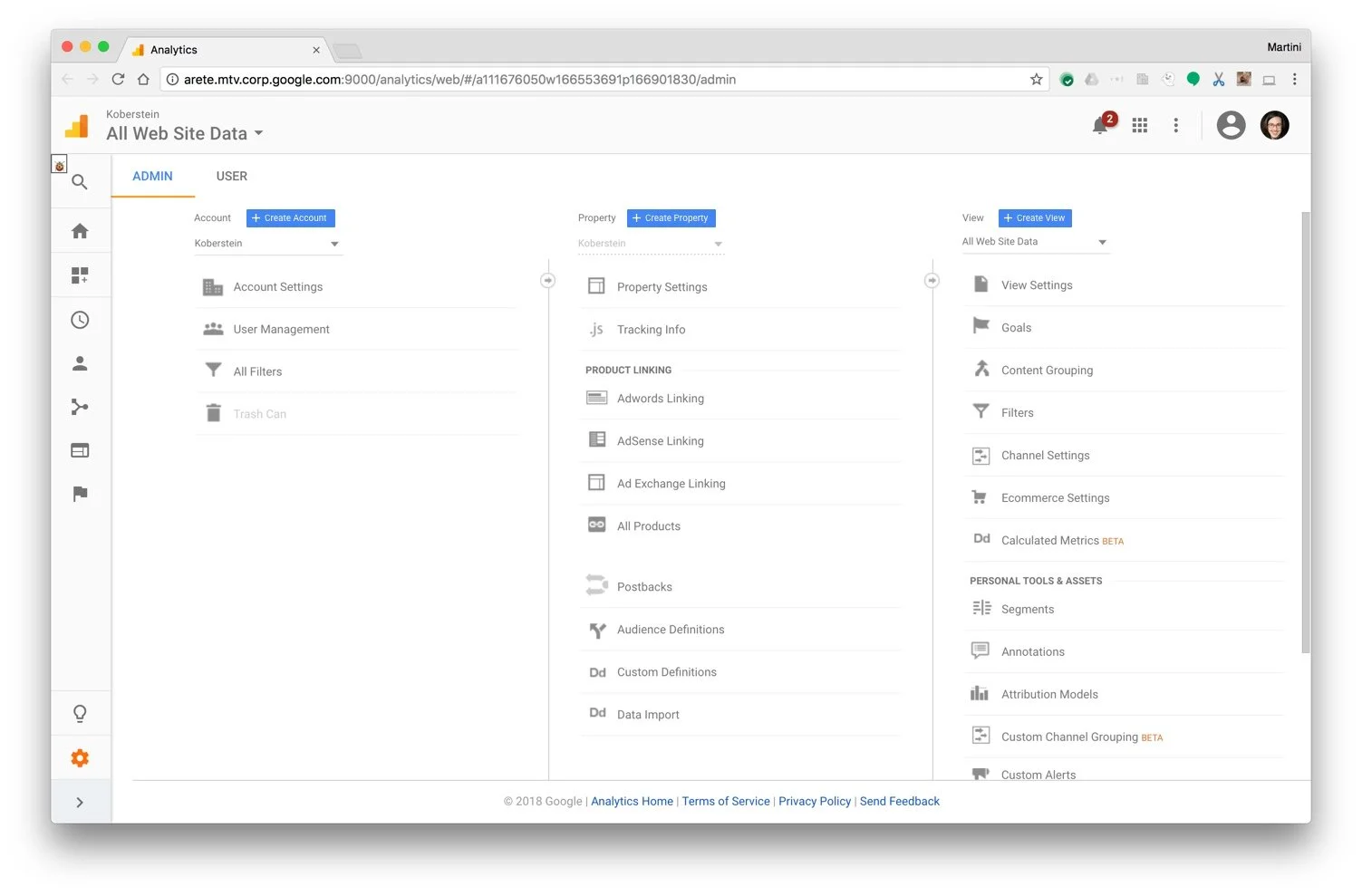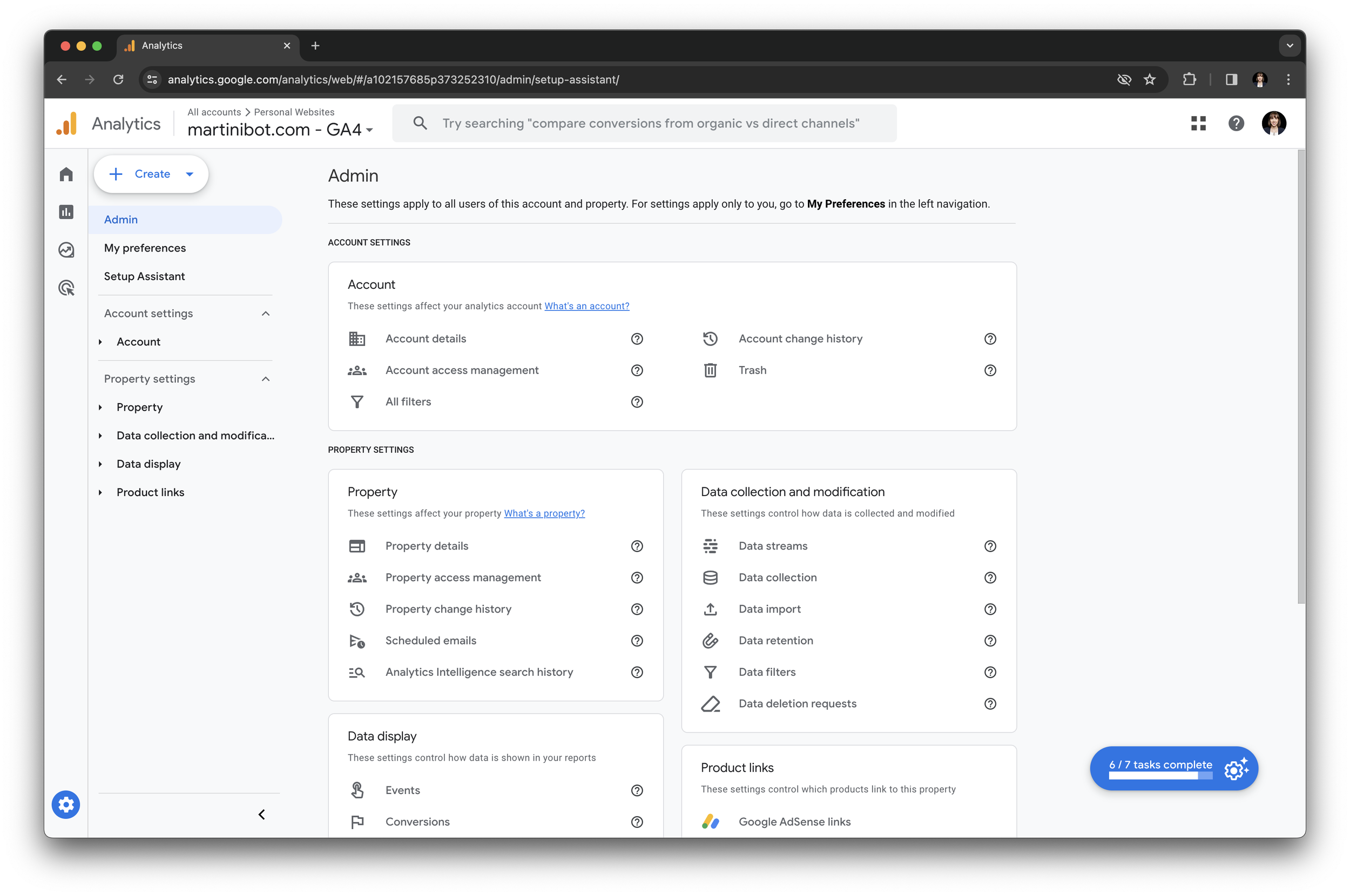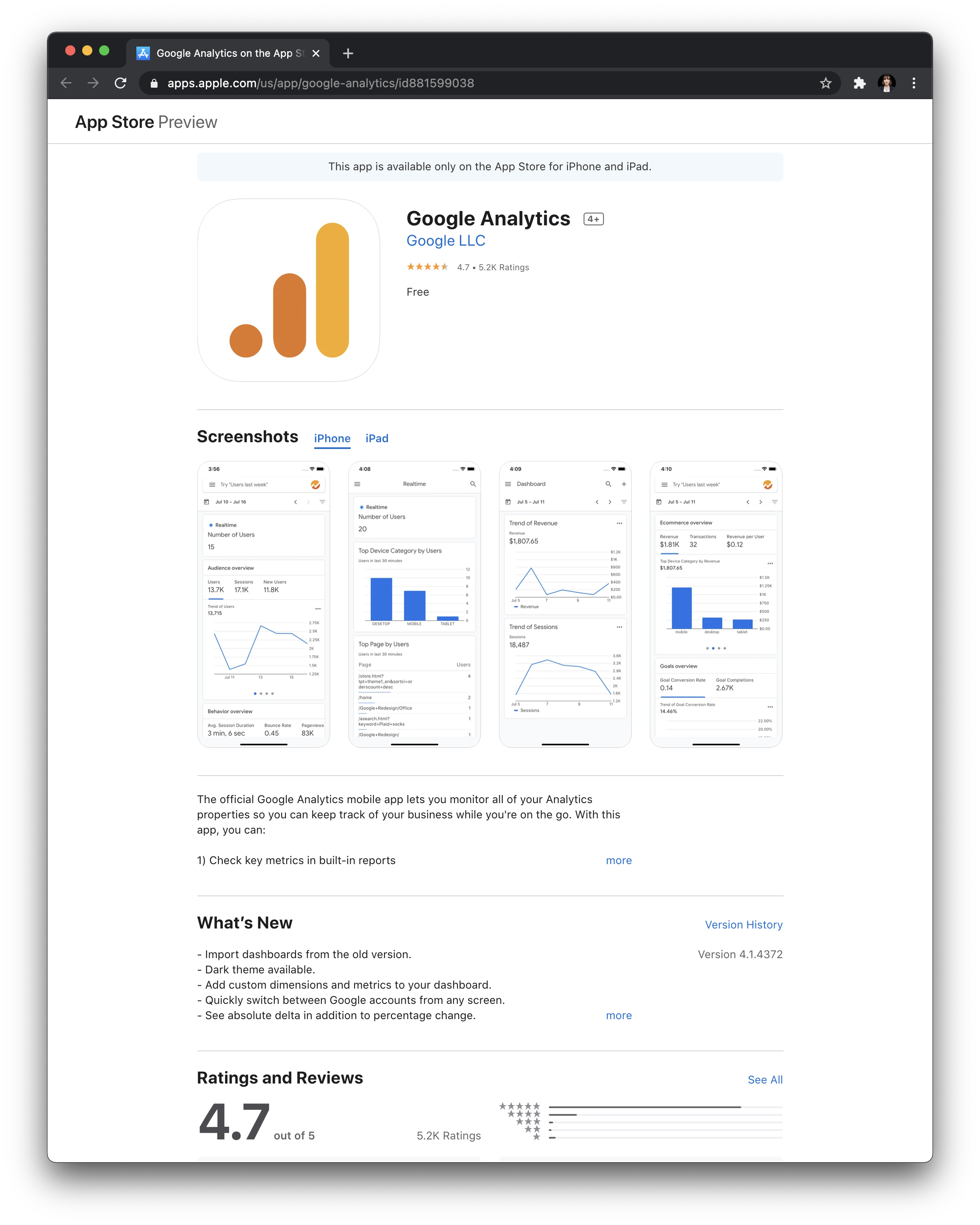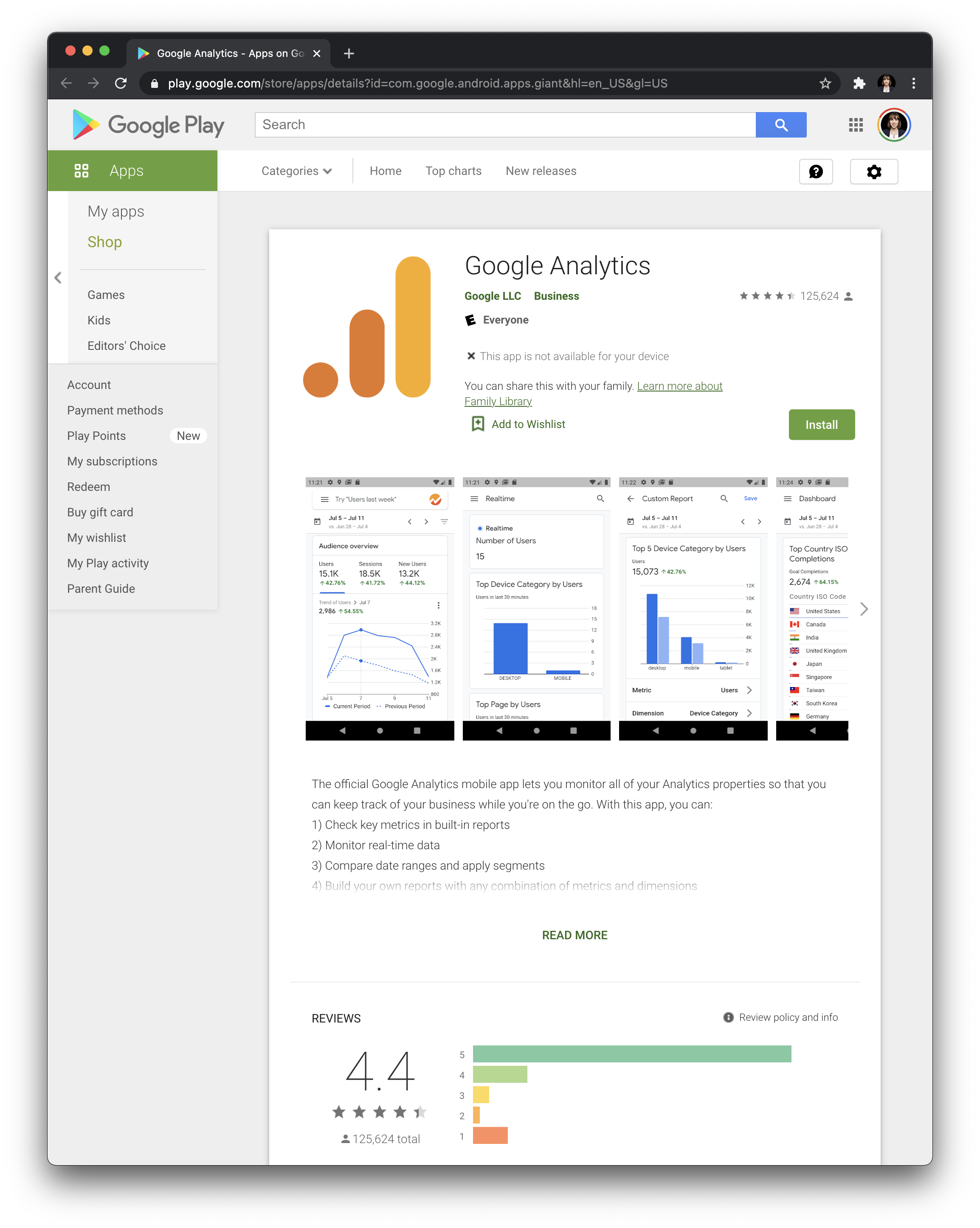Google Analytics
2017 - current
Google Analytics (GA) is a tool businesses use to understand website and app users. It’s more nearly 20 years old, and is used by a significant fraction of the internet. GA provides a unique opportunity to design products that support legacy workflows and complex enterprise needs, while also integrating modern AI/ML and interaction paradigms.
I currently lead a team of 6 designers working on next-generation analytics experiences. Much of my work is confidential, but I am able to share highlights from projects that have launched.
Google Analytics Admin
October 2023
Before…
The original Admin was launched in 2013 and organized settings into three columns. This mirrored the Account / Property / View structure of Universal Analytics (the previous version of the product).
…and After
Key collaborators:
Mike Kwok (UXD), Ed Huang (Eng), Hadrien Raffalli (PM), Danni Wu (Eng), Emily Luthra (UXD), Rishith Rayal (Eng), Eleanor Stribling (PM), Brian Stark (PM)
Summary
I led a redesign of the Google Analytics Admin in order to address usability issues that were preventing customers from finding settings and completing critical setup tasks.
Impact
We measured week-over-week increases of 20%-67% in completion rates of key tasks.
Press coverage was overwhelmingly positive.
Marketing news site CMSWIRE explained:
This setup aims to simplify locating and adjusting settings by categorizing them as users would typically encounter in a GA4 account. The design is appropriately tailored for ease of use. The previous layout aligned sections with account access, yet it partly reflected the navigation style of legacy GA versions. With most users accessing their accounts on tablets and laptops, having well-organized panels places pertinent information at the forefront.
PPC Land had this to say:
The new Admin experience reorganizes settings into intuitive categories, eliminating the need for users to search through a maze of options. By grouping settings based on their functionality and impact on data presentation, Google has simplified the process of locating and managing administrative tasks…By simplifying administrative tasks, Google has removed potential barriers to accessing valuable insights, allowing users to focus on extracting actionable data for informed decision-making.
Google Analytics Mobile App
August 2020
Before…
The previous mobile app, launched in 2016.
… and after
Collaborators:
Omer Shakil (Eng), Huaiwei Sun (UX), Sun Min Lim (UX), David Buckley (VizD), Carrie Chilton (VizD), Tongfang Sun (UX), Eddie Tribaldos (Eng), Joaquin Merino (Eng), Aubrey Logan-Terry (UXR)
Summary
I advocated for the strategic importance of this previously-unfunded project, staffing and leading the UX team responsible for re-launching the GA mobile app in 2020. The cross-functional team developed our product roadmap for the app based on insights from user research, data analysis, and usability studies.
Impact
Since launching in late 2020, the app was honored as one of Google Design’s Best of 2020, and has garnered high reviews in both the Google Play (4.4/5) and iOS App Store (4.7/5).
The app required major backend changes to support a new type of GA property that combines Web + App data. Notable frontend updates include:
Improved accessibility with larger fonts, larger tap areas, and improved color contrast
Prominent search that supports voice input
Aligning data viz styles with the GA website and other products across Google






